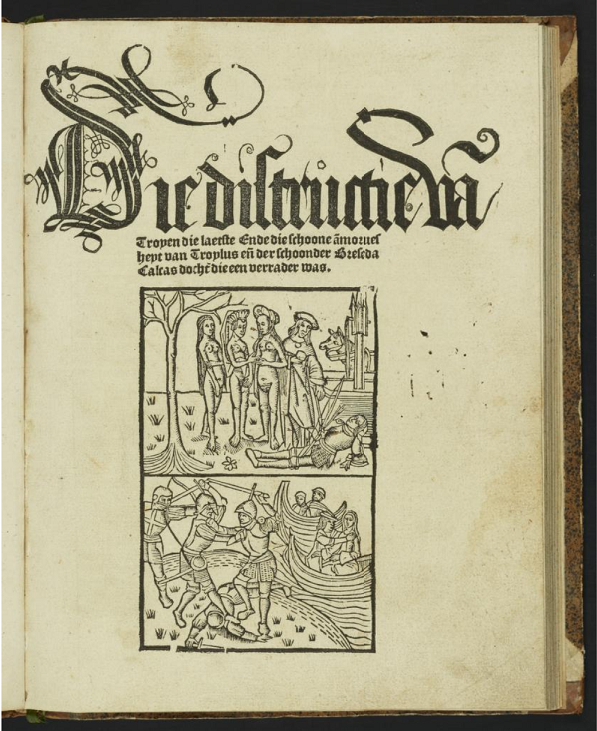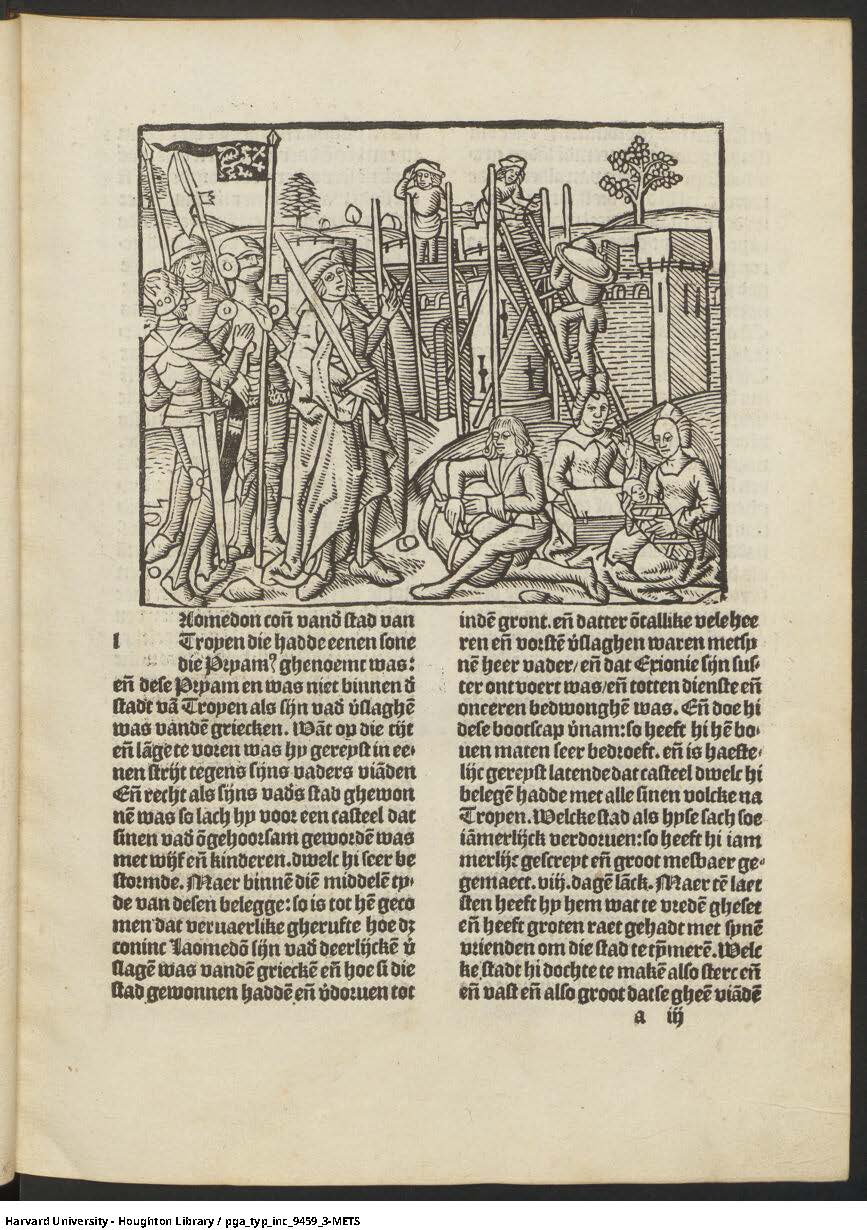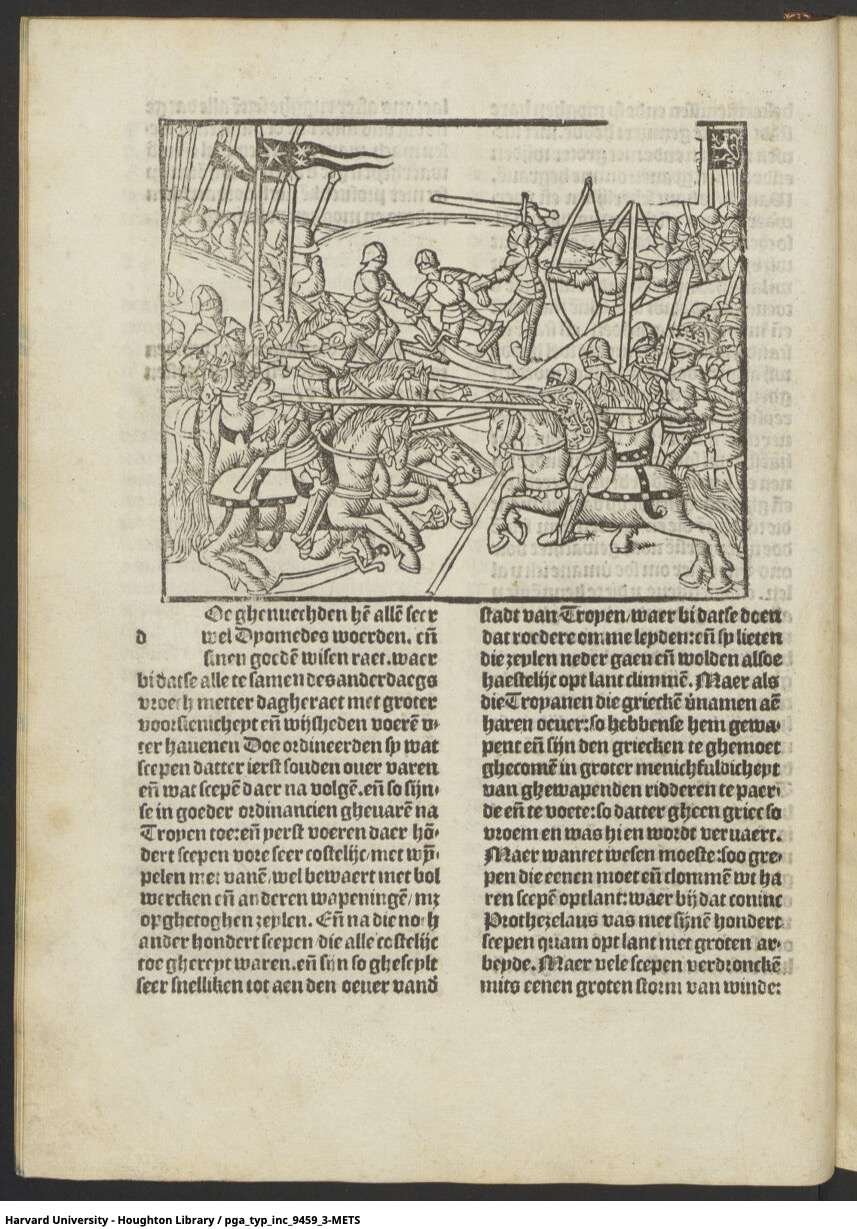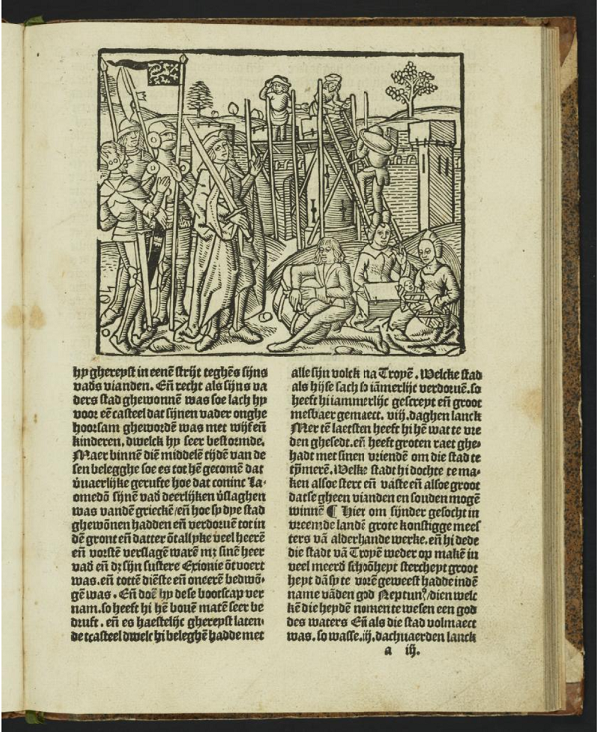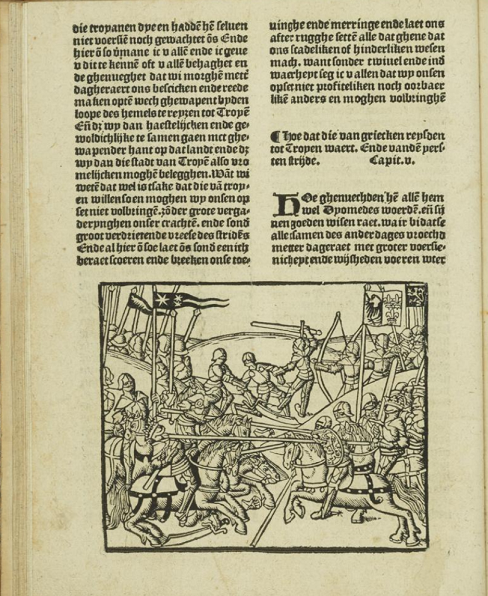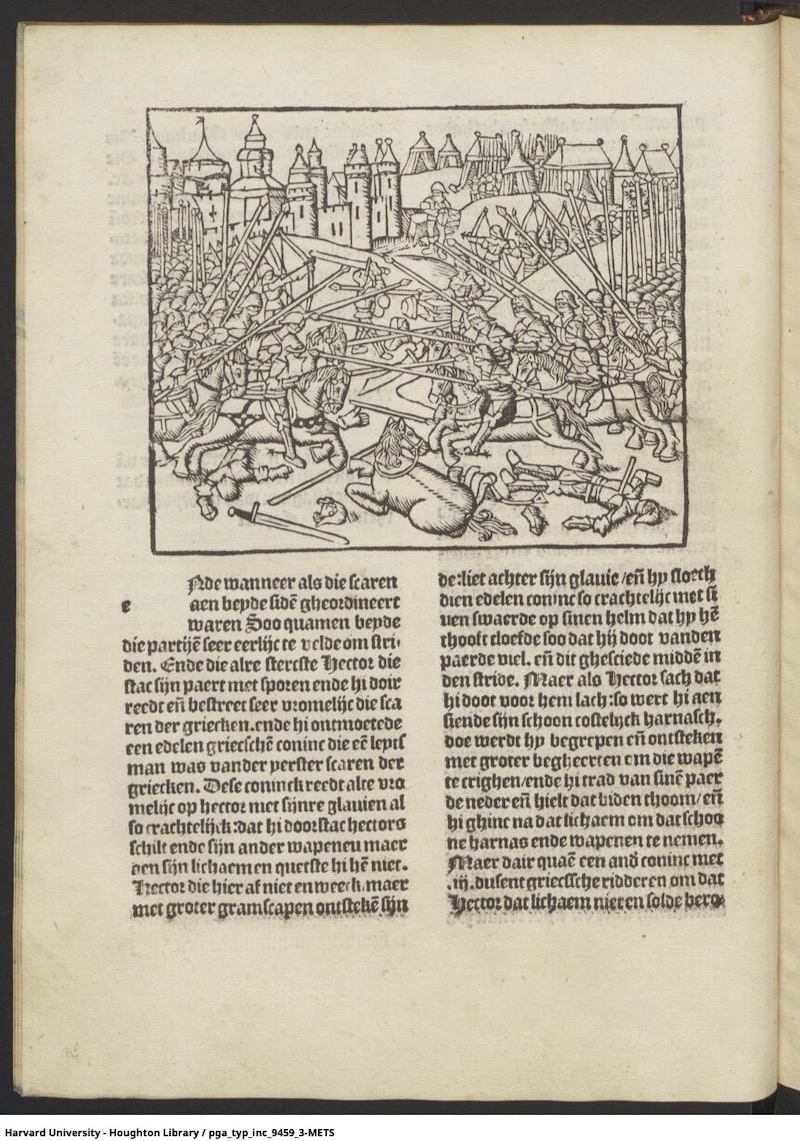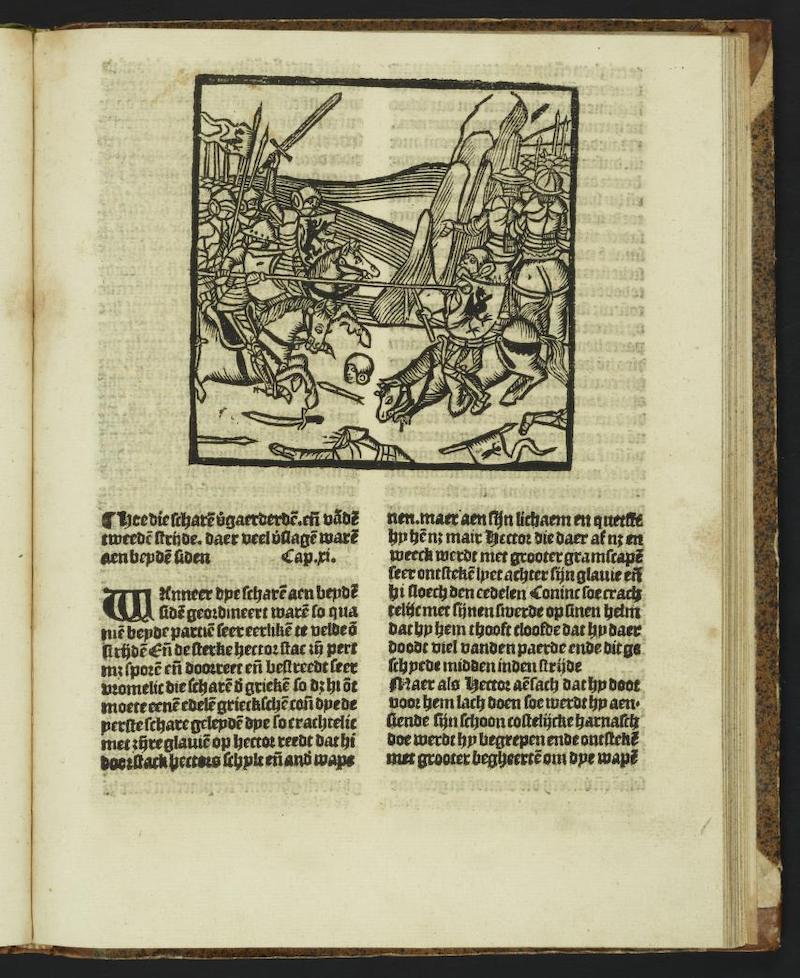1450-1550
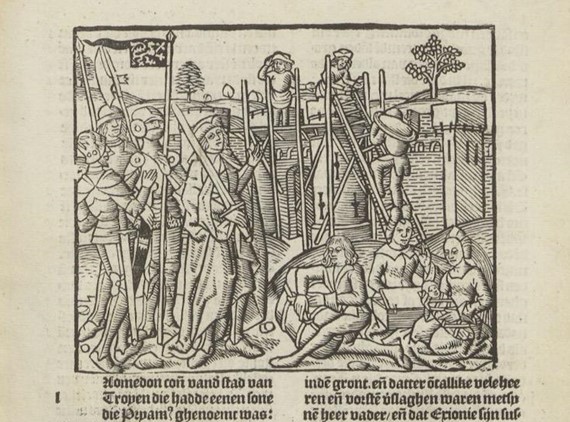
Het hergebruiken en kopiëren van houtsneden was een wijdverbreide praktijk in de vroege periode van de boekdrukkunst. Dit kon gebeuren tussen verschillende titels, tussen verschillende edities van één titel en binnen één enkele editie. Volledig nieuwe ontwerpen zijn altijd zeldzaam. Voor veel ontwerpen wordt gebruikgemaakt van iconografische conventies die ook al voorkwamen in manuscripten. Iedere drukker had zijn eigen strategieën om materiaal te kopiëren en te hergebruiken. Deze drukkers waren zo slim om algemene, courante afbeeldingen te gebruiken en gaven de voorkeur aan afbeeldingen die geschikt waren voor multifunctioneel gebruik. Ze zorgden er ook voor dat er ten minste een thematische of associatieve relatie was tussen de afbeelding en de tekst.
In sommige uitgaven van de Historia zijn verschillende houtsneden aanwezig, maar wat is hun betekenis? Uit studies van met name vroege gedrukte boeken in het Engels en Duits is gebleken dat de functie van afbeeldingen veel complexer was dan louter decoratief. Er zijn allerlei gevallen bekend waarbij veelvoorkomende motieven of steeds terugkerende afbeeldingen dienden om bijvoorbeeld verbanden tussen verschillende teksten of tekstfragmenten te benadrukken of om lezers uit te dagen nieuwe betekenissen te bedenken. Deze studies weerleggen het lang overheersende idee dat vroege drukkers lukraak houtsneden als illustraties gebruikten en hergebruikten enkel en alleen om kosten te besparen of om meer boeken te verkopen. In plaats daarvan is er een genuanceerder beeld ontstaan, waarbij de generieke beeldtaal van veel houtsneden en het hergebruik van houtblokken wordt gezien als wezenlijke kenmerken van de vroegmoderne beeldcultuur.
Drukkers gebruikten over het algemeen dezelfde courante afbeeldingen voor houtsneden. Daarom werden in een aantal gevallen blokken van halve figuren van geleerden bijvoorbeeld hergebruikt en gekopieerd door en geruild binnen een netwerk van drukkers. Onder anderen Vorsterman en Roelants maakten deel uit van dit netwerk, twee drukkers die de halve figuren van Van Doesborch vaak hergebruikten. De gewoonte om kleine, herbruikbare houtsneden van wetenschappers in te voegen lijkt enige tijd vóór 1520 te zijn geïnitieerd door Van Doesborch zelf. In de Historia is deze praktijk zichtbaar in twee uitgaven in het bijzonder, beide Nederlandse vertalingen van Guido’s werk. De eerste uitgave is van Rolant van den Dorpe en is vermoedelijk tussen 1496 en 1500 gedrukt. De tweede is van zijn opvolger, Van Doesborch, en te dateren tussen 1510 en 1515. In dit geval valt op dat Van Doesborch de meeste van de houtsneden gebruikt die in de uitgave van Van den Dorpe voorkomen, met uitzondering van een paar pagina’s. Hoewel de uitgaven met tien jaar tijdverschil zijn verschenen, staan de houtsneden op dezelfde pagina’s en hebben ze dezelfde details.







